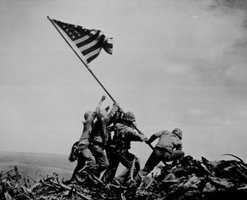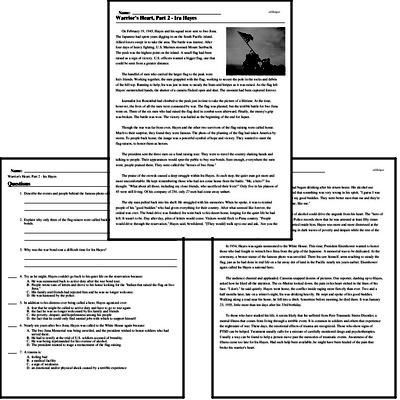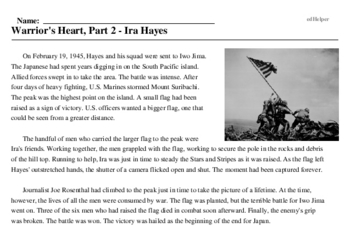Warrior's Heart, Part 2 - Ira Hayes
On February 19, 1945, Hayes and his squad were sent to Iwo Jima. The Japanese had spent years digging in on the South Pacific island. Allied forces swept in to take the area. The battle was intense. After four days of heavy fighting, U.S. Marines stormed Mount Suribachi. The peak was the highest point on the island. A small flag had been raised as a sign of victory. U.S. officers wanted a bigger flag, one that could be seen from a greater distance.
The handful of men who carried the larger flag to the peak were Ira's friends. Working together, the men grappled with the flag, working to secure the pole in the rocks and debris of the hill top. Running to help, Ira was just in time to steady the Stars and Stripes as it was raised. As the flag left Hayes' outstretched hands, the shutter of a camera flicked open and shut. The moment had been captured forever.
Journalist Joe Rosenthal had climbed to the peak just in time to take the picture of a lifetime. At the time, however, the lives of all the men were consumed by war. The flag was planted, but the terrible battle for Iwo Jima went on. Three of the six men who had raised the flag died in combat soon afterward. Finally, the enemy's grip was broken. The battle was won. The victory was hailed as the beginning of the end for Japan.
Though the war was far from over, Hayes and the other two survivors of the flag-raising were called home. Much to their surprise, they found they were famous. The photo of the planting of the flag had taken America by storm. To people back home, the image was a powerful symbol of hope and victory. They wanted to meet the flag-raisers, to honor them as heroes.
The president sent the three men on a fund raising tour. They were to travel the country shaking hands and talking to people. Their appearances would spur the public to buy war bonds. Sure enough, everywhere the men went, people praised them. They were called the "heroes of Iwo Jima."



